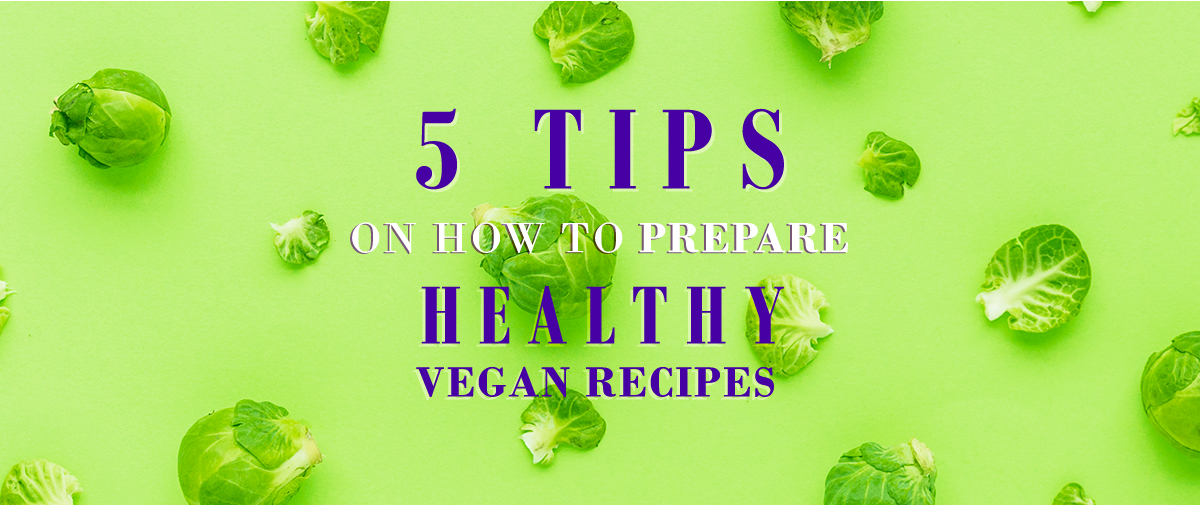Posted by Anne Joyce Raymundo on Dec 18th 2018
5 Tips on How to Prepare Healthy Vegan Recipes

There are many ways to eating healthy nowadays with vegan recipes and meals. But, the truth is, most people don't know what and how to prepare these meals. Here are some tips to improve your Vegan diet:
1. Incorporate fruits and nuts.
Incorporating nuts and fruits does not only give you more fiber in your diet but also vegetables like bean sprouts are a good source of protein. Not only will you feel full but you will be refreshed and invigorated. According to the Vegan RD, Vegans aren't walking around with kwashiorkor, but it's still possible to have suboptimal protein—not enough to produce overt deficiency symptoms but enough to feel less than great. Although it's extremely easy to meet protein needs on a vegan diet with minimal effort, some vegans who de-emphasize protein-rich foods could fall short, especially if they are restricting calorie intake. The key to meeting protein needs is to consume at least 3 servings of legumes (beans, peanuts, soy) per day. Some people, especially those who are older, may feel better with more than this amount, though.
2. Try to steer away from added sugar.
Not avoiding added calories from sugar fattening meals can substantially hurt your body with Diabetes or Obesity because of the glucose that is present in it. Thus, it is advisable to cut on unwanted sugar. Eat high fiber food like oatmeal, chia seeds, and quinoa. There are options available that could substitute for high sugar content food like pasta and white bread.
3. Eat healthy foods that you enjoy eating.
Try to stay healthy with easy to prepare vegan recipes. The trick is shopping in farmer's market for legumes or nuts and necessary oils and greens for salad and prepare them early on then, stock them on the fridge. Ideal oils to take into consideration also include coconut oil or vegetable oil. For the no cook oils, it is recommended to use olive oil for your dressing. Our body’s requirement for omega-3 fat can fall short on very low-fat diets that eliminate all nuts and seeds, and eating too little fat may also compromise nutrient absorption. This is especially true if you tend to favor raw vegetables over cooked. Going from a fat-rich omnivore diet to a very low-fat vegan diet could leave new vegans feeling generally unsatisfied, too. You might feel tempted to add meat back to your diet when all you really need to do is add some healthy fats to meals according to the Vegan RD
4. Consider the types of juice that are healthy but also tastes good.
Juicing is a great way to detox as well. There are a lot of juicing recipes for vegans that are delicious and easy to make. Some of them are Homemade Vegan Caesar Cocktail, Cucumber Juice and many more. Once you know how to get the most out of your juicing practices, you'll be ready to try out some delicious vegan juicing recipes. There are plenty of wonderful options out there that can brighten up your day, but can also detox your body, and banish a range of common ailments too. As with most things, you'll find the more you experiment, the more varied your diet becomes.
5. Stock on the basics.
Time to stock on the basics as not all things come readily available to vegans. Convenient products like veggie meats, cheeses, and ice cream can help when time and cooking skills are issues—as they are for many Americans. Everyone's circumstances are different and these foods may help some people stay vegan. The texture and familiar nature of veggie meats and cheeses can also add a sense of comfort to vegan meals.
If you’re a Vegan, you’ll love the discussion on this episode’s recording here:

